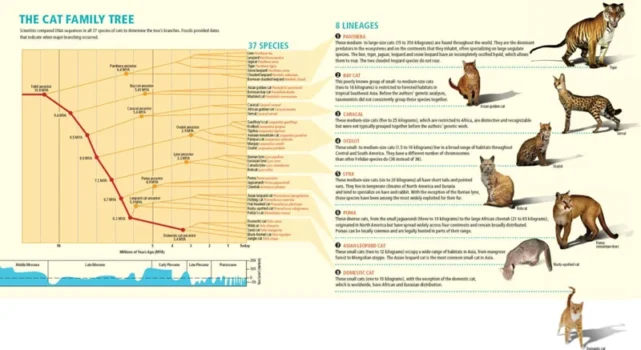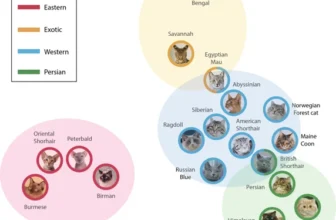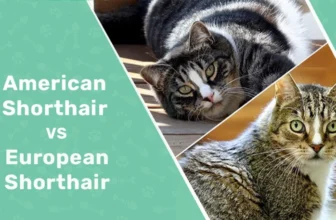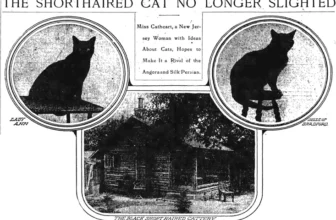It’s undeniable that cats are fascinating creatures. They’ve been domesticated for thousands of years, and throughout that time, they’ve evolved and adapted to the changing world around them. One breed of cat, in particular, has a rich history that spans multiple continents and centuries: the American Shorthair. How did this breed come to be? What impact did domestication have on its ancestry and evolution? We’ll explore these questions and more in the following examination of the American Shorthair cat’s intriguing history.
The Ancestry of American Shorthair Cats
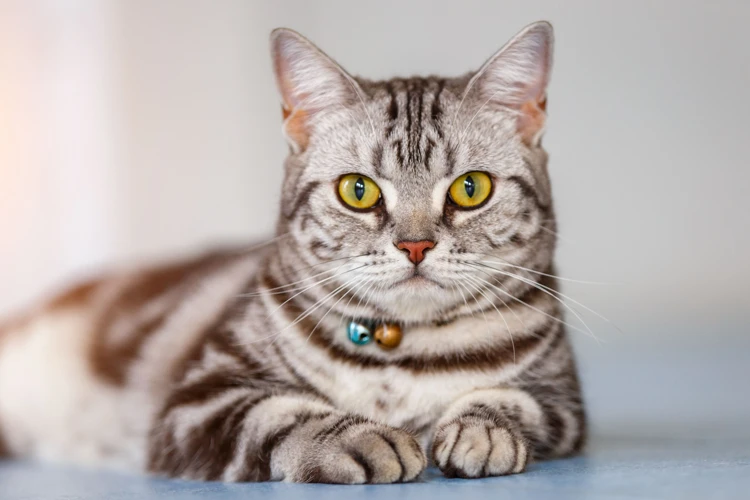
The ancestry of the American Shorthair cat is a fascinating subject that sheds light on how this breed came to exist, and how it has evolved over time. This breed has a rich history that spans many centuries and continents, making it a unique and exciting topic to explore. From their origins in Europe to their arrival in America, the early breeding history of American Shorthair cats is a testament to their impressive genetic ancestry. Let’s delve deeper into the fascinating story of the American Shorthair cat’s ancestry. To learn about the genetic diversity of American Shorthair cats, you can visit this page.
Their Origins in Europe
The American Shorthair breed descended from European cats. These cats were brought to the United States on ships to hunt rodents and other pests on the long journey across the Atlantic. These cats were not originally intended to be pets, but rather working animals. However, their gentle demeanor and hunting skills quickly made them popular with early American settlers.
Their genetic ancestry can be traced back to the cats that were the foundation of European cat breeds. The European shorthair cat is one of the most direct ancestors of the American Shorthair. European shorthair cats are still common in many parts of Europe and share many physical and personality traits with their American counterparts.
The influence of European shorthair cats on the development of the American Shorthair breed cannot be overstated. Many of the characteristics that define the American Shorthair, such as their short, dense coat and robust, muscular build, were inherited from their European forebears.
Despite their European origin, American Shorthair cats have undergone significant changes since coming to America. The climate, diet, and lifestyle of early American settlers had a profound effect on the breed. Over time, they adapted to their new surroundings and evolved into the American Shorthair we know today.
If you want to learn more about the genetic ancestry of American Shorthair cats, check out our in-depth article that covers this topic. In it, we explore the ancient roots of the breed and how it has changed over time.
Arrival in America
When American Shorthair cats arrived in America, they were brought over by European settlers along with stores of food to keep them fed during the long voyage. It is believed that these cats were originally from England and were likely brought over on ships to help control the rodent populations.
Upon arrival, these cats were used primarily for their hunting abilities, both on the ships and in the new settlements. Their natural instinct to hunt and catch prey made them valuable assets in keeping the rat and mouse populations at bay. However, it wasn’t until the late 1800s that they were recognized as a distinct breed and began being bred for specific traits.
During this time, breeders focused on creating a cat that was both a skilled hunter and a friendly, affectionate companion. The breed quickly gained popularity, and by the early 1900s, they were recognized by the Cat Fanciers’ Association (CFA) as an official breed.
The arrival of American Shorthair cats in America marked the beginning of a long and fascinating history of the breed’s evolution and development into the beloved pets we know today.
| Historical Context | Impact |
|---|---|
| European Settlement in America | Introduction of European short-haired cats to America |
| Need for Pest Control | American Shorthair cats selected for hunting abilities |
| Growing Popularity | Official recognition by the CFA and breed development |
For more information about the origins and evolution of American Shorthair cats, check out our article on The Evolution of American Shorthair Cats.
Early Breeding History
The early breeding history of American Shorthair cats can be traced back to the 1600s when they were first brought to America by European settlers. These cats were initially brought over to control the rodent population on the ships and later as working cats to keep the rodent population under control in the new colonies. As the colonies began to grow, so did the population of cats.
During the colonial period, many of these cats interbred with other breeds that were brought over by settlers, including British Shorthairs and Persian cats. This interbreeding eventually resulted in a distinct breed of cat that was uniquely American.
It wasn’t until the late 1800s that American Shorthair cats began to be bred specifically as a breed. One of the first champions of the breed was a silver-coated male named Shawnee Trademark, who won numerous awards and helped to establish the American Shorthair as a recognized breed.
As breeders continued to work on developing the American Shorthair breed, they focused on traits such as a sturdier body type, stronger bones, and a thicker coat that would make them better adapted to the American climate. Through careful selection and breeding practices, these traits were further developed and eventually became part of the breed standard.
Today, American Shorthair cats are one of the most popular breeds in the United States and have played a significant role in shaping the cat breeds that are prevalent in North America today. Their early breeding history and interbreeding with other breeds have also influenced their unique physical characteristics and temperament. For more information on the evolution of American Shorthair cats, check out our article on Evolution of American Shorthair Cats.
The Evolution of American Shorthair Cats
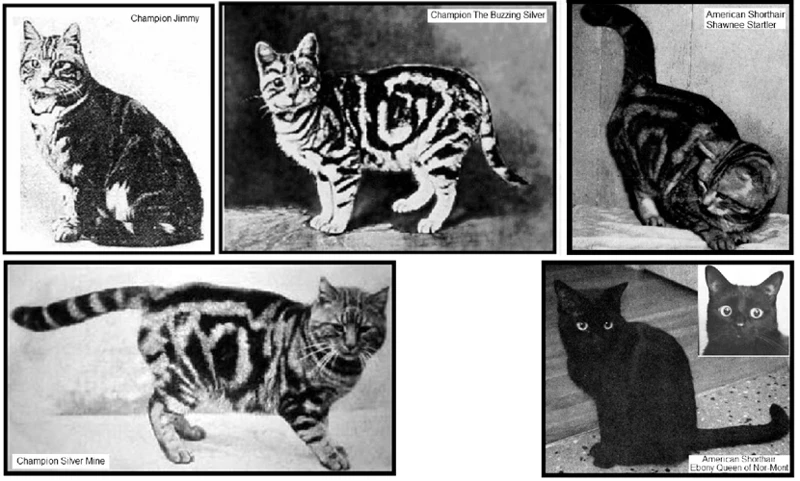
As with any animal, the evolution of the American Shorthair cats has been an adaptation to meet the demands of their environment. The history of these beloved cats is fascinating, and a better understanding of their evolution sheds light on their unique characteristics. From their physical appearance to their temperament, American Shorthair cats have undergone significant changes over time. In this section, we will explore their physical characteristics, temperament, and how they have adapted to domestication.
Physical Characteristics
The physical characteristics of American Shorthair cats are what make them unique and distinguishable from other breeds. These cats have a muscular build with a broad chest and a powerful appearance. They have a thick and dense coat that comes in a variety of colors, such as silver, black, blue, and red, among others. The coat is short and easy to maintain, making grooming a simple task.
One of the most striking physical features of the American Shorthair cat is its eyes. They are large, round, and wide set with colors ranging from gold to green and blue. They have a friendly and alert expression, which adds to their charm. For their size, American Shorthair cats have small ears that sit high on their head with a rounded tip. Their ears are wide at the base and have fur tufts inside.
American Shorthair cats are also known for their strong legs and large paws. Their powerful legs allow them to jump high and run fast, which makes them great hunters. Their paws are round and firm, with five toes on the front and four on the back. Their claws are retractable and sharp, which helps them climb trees and scratch surfaces.
Finally, the American Shorthair cat has a sturdy and strong tail that is medium-sized and tapered at the end. They use it to maintain balance while jumping and running.
It is worth mentioning that the physical characteristics of American Shorthair cats have been influenced over time by the European shorthair cats. They were brought to the United States by early settlers, interbred with domestic cats, and gradually developed into the breed we know today. To learn more about the influence of European shorthair cats on American Shorthair cats, you can read our article at https://www.yourwebsite.com/eu-shorthair-cats-influence-on-am-shorthair-cats/. Additionally, if you want to compare American Shorthair cats to other breeds and learn about their evolution, you can read our article at https://www.yourwebsite.com/am-shorthair-vs-other-breeds-evolution/.
Temperament
The American Shorthair cat is widely known for its gentle and affectionate temperament. These cats are highly adaptable to various environments and have a friendly disposition. Here are some key points about the temperament of American Shorthair cats:
1. Playful: These cats are known for being playful and active. They love interactive toys and games, and they enjoy spending time with their owners.
2. Independent: American Shorthair cats are independent creatures and do not require constant attention. They are content spending time alone or with their owners.
3. Affectionate: Despite their independent nature, American Shorthair cats are also very affectionate. They enjoy snuggling up with their owners and seek attention when they want it.
4. Easy-going: These cats are known for their easy-going nature. They adapt well to new environments and situations, and are generally not easily stressed.
5. Intelligent: American Shorthair cats are highly intelligent and can be trained to do various tricks and behaviors. They are quick learners and enjoy the mental stimulation that comes with training.
The temperament of the American Shorthair cat makes it an excellent companion for families and individuals alike. Whether you are looking for a playful and active cat, or a more independent and easy-going pet, the American Shorthair cat is a great choice.
To learn more about the traits and history of American Shorthair cats, check out our article on American Shorthair Cat Breed Traits and History.
Adaptation to Domestication
American Shorthair cats are a breed that has adapted remarkably to domestication. Domestication is defined as “the process of adapting a wild animal or plant to life with humans or humans to life with a wild animal or plant”. This process has been going on for over 10,000 years, since humans first began to domesticate animals.
Here are a few ways that the American Shorthair cat has adapted to domestication:
- Increased Sociability: One of the most significant adaptations of the American Shorthair cat to domestication is the development of a more sociable disposition. This breed of cat is well-known for being friendly and affectionate towards their humans. They also tend to get along well with other animals, which is important in a domestic environment.
- Reduced Aggression: Domestication has also led to a reduction in the aggressive tendencies of American Shorthair cats. These cats are generally relaxed and easy-going, even in situations that might stress out other breeds. They are not known for being territorial or confrontational, which makes them great pets for families with children or other animals.
- Improved Health: Domestication has also led to a significant improvement in the health of American Shorthair cats. In the wild, cats are prone to a wide range of diseases and infections that can be difficult to treat. However, domestication has allowed breeders to select for cats that have stronger immune systems and are less susceptible to illnesses. As a result, American Shorthair cats are generally healthier and more robust than their wild counterparts.
- Adaptation to Indoor Living: Domestication has also enabled American Shorthair cats to adapt to living indoors. These cats are perfectly content to spend most of their time indoors, which makes them ideal pets for people who live in apartments or other small spaces. They are also less likely to wander away from home or get into fights with other animals, which reduces their risk of injury or disease.
American Shorthair cats have adapted remarkably well to domestication, thanks to their increased sociability, reduced aggression, improved health, and ability to adapt to indoor living. These adaptations have made them one of the most popular cat breeds in the world, beloved for their friendly dispositions and easygoing nature.
Domestication and Breed Standards
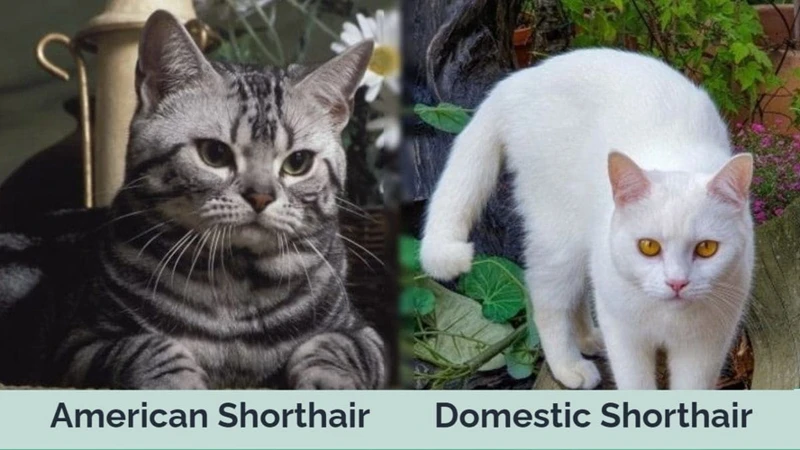
As American Shorthair cats became more popular as domestic pets, breeders began to focus on developing breed standards that would produce cats with consistent physical characteristics and temperaments. This process of domestication has played a significant role in shaping the modern American Shorthair as we know it today. In this section, we will explore the impact of domestication on American Shorthair cats and discuss the various breed standards established by cat fancier organizations around the world.
CFA Breed Standards
The Cat Fanciers’ Association (CFA) is one of the largest cat breed registries in the world. The CFA breed standards for American Shorthair Cats were created to provide a guideline for breeders to produce cats that meet specific criteria. The standards cover various aspects of the cat’s appearance, including head and body shape, coat color and texture, and eye color.
Head and Body Shape: The CFA standard for American Shorthair Cats requires a large, round head with full cheeks and a strong jawline. The neck should be short and muscular, leading to a sturdy, medium to large body with a broad chest and strong bones. The legs should be strong and well-proportioned, with large, round paws. The tail should be medium in length and well-proportioned to the body.
Coat Color and Texture: The CFA recognizes a wide range of colors and patterns for American Shorthair Cats, including silver tabby, brown tabby, and black. The coat should be short and dense, with a plush texture that stands away from the body. The color should be even throughout, with clear, distinct markings for tabby patterns.
Eye Color: The standard requires large, round eyes that are set wide apart and have an alert, open expression. The color can range from green to gold, with no preference for a particular shade.
It’s important to note that while the CFA breed standards provide a valuable guideline for breeders, they should not be the only consideration when choosing a pet. The temperament, health, and overall well-being of the cat should also be taken into account. The standards do not guarantee a cat’s personality or health, and responsible breeders will prioritize the welfare of their cats above all else.
TICA Breed Standards
The TICA (The International Cat Association) has its own set of breed standards for American Shorthair Cats. These breed standards cover a range of physical characteristics, grooming requirements, and temperament for American Shorthair Cats. Here are some of the key TICA breed standards for American Shorthair Cats:
- Body: According to TICA breed standards, the body of an American Shorthair Cat should be medium to large in size with a muscular build. The chest should be broad and the shoulders should be powerful and sturdy. The legs should be straight and proportionate to the rest of the body.
- Head: The head should be round with a short, broad muzzle. The cheeks should be plump and the ears should be medium in size with slightly rounded tips. The eyes should be large and expressive.
- Coat: The coat should be short, dense, and glossy. All colors and patterns are acceptable under TICA breed standards, including solid colors, tabbies, and bi-colors.
- Grooming: American Shorthair Cats have a low-maintenance coat that only requires occasional brushing to remove loose hair. They do not require regular bathing.
- Temperament: According to TICA breed standards, American Shorthair Cats should be friendly, outgoing, and affectionate with their owners. They should also be independent and able to entertain themselves when left alone.
The TICA breed standards for American Shorthair Cats reflect the breed’s history as a versatile working cat with a friendly and adaptable temperament. These standards also acknowledge the breed’s popularity as a beloved companion animal and emphasize the importance of maintaining their unique physical characteristics and personality traits through careful breeding practices.
WCF Breed Standards
When it comes to breed standards for American Shorthair cats, the World Cat Federation (WCF) has their own set of guidelines that differ slightly from those of other organizations.
According to the WCF, American Shorthair cats should be of medium to large size, with a strong, muscular build and broad chest. Their head should be broad and slightly rounded, with a strong jawline and prominent whisker pads. The eyes should be large and round, set wide apart and to the side of the head, with colors ranging from green to gold. The ears should be medium in size, slightly rounded at the tips, and set wide apart with tufts of hair on the tips.
The fur should be short and dense, with a thick undercoat for protection against cold weather. A range of coat colors and patterns are acceptable by the WCF, including solid colors like black, white, red, cream, and blue; tabby patterns in various colors; and bicolor or tricolor patterns.
The WCF places a strong emphasis on a cat’s overall health and well-being, as well as temperament. They require American Shorthair cats to have a stable and friendly disposition, with a tendency towards affectionate behavior towards their owners.
In addition to physical and behavioral traits, the WCF also has strict requirements when it comes to showing American Shorthair cats. These include guidelines for grooming and presentation, as well as specific rules about the cat’s posture, movements, and overall appearance.
The WCF’s breed standards for American Shorthair cats aim to promote health, beauty, and overall excellence in the breed. By adhering to these standards, breeders can help ensure the continued success and popularity of the American Shorthair for years to come.
WCF Breed Standards for American Shorthair Cats
| Physical Characteristics | Behavioral Characteristics | Show Requirements |
|---|---|---|
| Medium to large size | Stable and friendly disposition | Strict guidelines for grooming and presentation |
| Strong, muscular build and broad chest | Affectionate behavior toward owners | Specific rules about posture, movements, and appearance |
| Broad, slightly rounded head with strong jawline | ||
| Large, round eyes set wide apart and to the side of the head | ||
| Medium-sized ears that are slightly rounded at the tips and set wide apart with tufts of hair on the tips | ||
| Short, dense fur with a thick undercoat for protection against cold weather | ||
| Range of acceptable colors and patterns, including solid colors, tabby patterns, and bicolor/tricolor patterns |
The Modern American Shorthair Cat
There’s no denying that the American Shorthair cat is a beloved and iconic breed in the United States. Over the years, this feline has undergone various transformations, all of which have led to the modern American Shorthair cat we see today. In this section, we’ll delve into the current state of the breed, including its popularity among cat lovers, care and maintenance requirements, and potential health issues that owners should be aware of. So, fasten your seatbelts and prepare for a fascinating journey into the world of the modern American Shorthair cat.
Current Popularity
The American Shorthair Cat is a popular breed among cat lovers today. They are known for their sweet and friendly temperament, as well as their distinctive physical characteristics. According to the Cat Fanciers’ Association (CFA), the American Shorthair is the eighth most popular cat breed in the United States.
Popularity Ranking by the CFA
Rank | Breed
—-|—–
1 | Persian
2 | Exotic
3 | Maine Coon
4 | Ragdoll
5 | British Shorthair
6 | Scottish Fold
7 | Sphynx
8 | American Shorthair
9 | Siamese
10 | Devon Rex
As seen in the above table, American Shorthair Cats are one of the most beloved cat breeds in America, falling in eighth place in popularity rankings. They are beloved for their playful and curious personalities, their low-maintenance and easy-to-care for coats, and their adaptability to different environments.
Aside from its popularity in the US, the American Shorthair Cat is also becoming more well-known internationally. In Canada, the American Shorthair Cat was the fourth most popular breed among cat lovers in 2017. In Europe, the breed is steadily gaining in popularity, with the World Cat Federation recognizing the breed and establishing breed standards.
Popularity among Cat Lovers on Social Media
In the era of social media, popularity is often measured by the number of followers a cat breed has on platforms like Instagram. The American Shorthair Cat has a significant following on Instagram, with dedicated accounts posting pictures and videos of their beloved pets regularly.
One such account is @arianna_the_american_shorthair, with over 80,000 followers. Arianna’s owner shares photos of the cat’s daily adventures alongside loving descriptions of Arianna’s personality and endearing traits, adding to the American Shorthair’s popularity on social media.
The American Shorthair Cat is a beloved breed among cat lovers worldwide, known for their gentle temperament, low-maintenance coats, and adaptability to new environments. With their growing popularity on both traditional and social media platforms, it’s clear that they will continue to be a cherished breed for years to come.
Care and Maintenance
Proper care and maintenance are essential to ensure the well-being and longevity of American Shorthair Cats. Here are some important aspects to consider:
| Diet | American Shorthair Cats should be fed a balanced, high-quality diet that meets their nutritional needs. Their diet should consist of protein, fat, carbohydrates, vitamins, and minerals. It’s essential to avoid feeding them human food, which can upset their digestive system and lead to obesity. Consult with your veterinarian for specific dietary recommendations. |
|---|---|
| Grooming | American Shorthair Cats have a short, dense coat that requires minimal grooming. However, they still need regular brushing to remove loose hair and prevent matting. They may also need occasional baths, especially if they get into something messy or start to smell. It’s essential to trim their nails regularly to prevent them from becoming overgrown and causing discomfort. |
| Exercise | American Shorthair Cats are active and playful, so they need regular exercise to keep them healthy and happy. They love to play with toys, climb, and explore their environment. Providing them with scratching posts, climbing trees, and interactive toys is a great way to keep them stimulated and engaged. Aim for at least 20-30 minutes of playtime every day. |
| Litter Box | American Shorthair Cats are clean animals and prefer to use a litter box. It’s essential to keep the litter box clean and accessible at all times. Aim to scoop it at least once a day and replace the litter every week. Make sure you provide them with enough litter boxes if you have multiple cats. |
By following these tips for care and maintenance, you can ensure that your American Shorthair Cat stays healthy, happy, and well-cared for. Always consult with your veterinarian for specific recommendations for your cat’s individual needs.
Health Issues
As with any breed of cat, American Shorthair cats may be prone to certain health issues. It is important to be aware of these conditions so that you can take the necessary preventative measures and seek appropriate veterinary care when needed. Here are some common health issues to watch out for:
| Health Issue | Symptoms | Treatment |
|---|---|---|
| Hypertrophic Cardiomyopathy (HCM) | Difficulty breathing, lethargy, fainting, sudden death | Medication to help manage symptoms, surgery in severe cases |
| Progressive Retinal Atrophy (PRA) | Night blindness, dilated pupils, visible retina deterioration | No cure, but slowing the progression with vitamin A supplementation may be possible |
| Polycystic Kidney Disease (PKD) | Increased thirst and urination, weight loss, vomiting, lethargy | Supportive care to slow the progression of the disease, may require dietary changes or medication |
| Feline Lower Urinary Tract Disease (FLUTD) | Straining to urinate, blood in urine, frequent urination | Medication to relieve pain and inflammation, dietary changes, urinary catheterization in severe cases |
| Obesity | Joint pain, shortness of breath, lethargy, decreased mobility | Dietary changes, increased exercise, weight management program overseen by a veterinarian |
It’s important to note that not all American Shorthair cats will develop these health issues, but the breed may be genetically predisposed to them. Regular check-ups with a veterinarian can help catch any potential health problems early on. Feeding your cat a balanced diet, providing regular exercise, and keeping up with parasite prevention can all help promote good health in your American Shorthair.
Conclusion
After examining the origins, evolution, and domestication of American Shorthair cats, it’s clear that this breed has a rich and fascinating history. The American Shorthair’s journey began in Europe, where they were bred for their working abilities, such as hunting rodents and pests. Upon arrival in America, the breed was further developed through selective breeding and became a beloved household pet.
The evolution of American Shorthair cats has been marked by their physical characteristics, affectionate temperament, and ability to adapt to domestication. These cats are known for their muscular build, short fur, and various coat colors and patterns. Their friendly and outgoing nature makes them beloved companions in households across the United States and beyond.
The process of domestication has been both a boon and a challenge for the American Shorthair breed. While they have adapted well to life with humans, this has also led to changes in their genetic makeup. Breed standards are now in place to preserve the American Shorthair’s physical and temperamental traits.
The modern American Shorthair cat remains a popular pet in the United States and around the world. Owners must take care to provide proper maintenance and address any potential health issues, such as dental problems and obesity.
In conclusion, the American Shorthair cat has a rich and intriguing history that spans centuries. Through their hard work and adaptability, they have become a beloved household pet and a true member of many families. With proper care, we can ensure that this breed continues to thrive for generations to come.
Frequently Asked Questions
What is the origin of American Shorthair cats?
American Shorthair cats originated in Europe and were brought to America by early settlers.
How did American Shorthair cats evolve over time?
Through years of breeding and adaptation to domestication, American Shorthair cats became larger and heavier, but still retained their signature muscular build and short coats.
What are some physical characteristics of American Shorthair cats?
They have a strong, muscular build, short hair, and a round, expressive face with bright, alert eyes. Their coat colors can range from solid black, white, or grey to tabby, tortoiseshell, or calico.
What is the temperament of American Shorthair cats?
They are known for their even-tempered and affectionate personalities. They are great companions for families with children or other pets.
Were American Shorthair cats originally bred for a specific purpose?
No, they were simply domesticated and bred for their companionable nature and overall health and appearance.
What are the different breed standards for American Shorthair cats?
The Cat Fanciers’ Association (CFA), The International Cat Association (TICA), and The World Cat Federation (WCF) all have their own breed standards for American Shorthair cats. Each organization has slightly different requirements for breed characteristics, coat colors, and temperament.
How do I care for my American Shorthair cat?
Your American Shorthair cat needs regular brushing to maintain a healthy coat, as well as plenty of playtime and exercise. They also require annual check-ups and vaccinations from a veterinarian.
What health issues should I be aware of with American Shorthair cats?
Like all cats, American Shorthairs are susceptible to health issues such as dental problems, respiratory infections, and kidney disease. Regular check-ups and preventive care can help minimize these risks.
Why are American Shorthair cats so popular as pets?
Their even-tempered, affectionate personalities make them great companions for families and individuals alike. They are also adaptable to a variety of living situations, from apartments to large homes with yards.
Can American Shorthair cats be trained?
Yes! With patience and positive reinforcement, American Shorthair cats can be trained to do a variety of tricks and behaviors, such as using a scratching post or walking on a leash.

